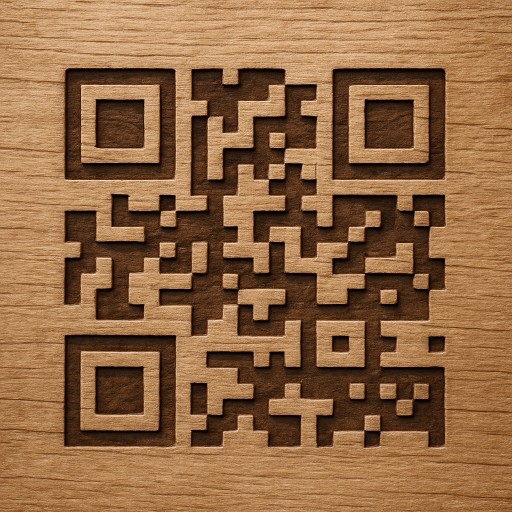
QR Code Marketing Stats for 2025: ROI, Scan Rates, and Consumer Behavior
Posted in :
Introduction: The Data Behind QR Code Marketing Success
As QR codes continue their remarkable transformation from pandemic necessity to marketing essential, 2025 has delivered unprecedented data insights that reveal the true scope of this technology’s impact on consumer behavior and business performance. The statistics emerging this year paint a compelling picture of mature adoption, measurable ROI, and sophisticated consumer engagement patterns.
According to the State of QR Codes 2025 report, 59% of consumers scan QR codes daily, demonstrating that QR technology has moved far beyond experimental adoption into routine consumer behavior. This comprehensive analysis examines the most significant QR code marketing statistics for 2025, providing marketers and business leaders with the data-driven insights needed to make informed strategic decisions.
From scan rate trends across demographics to measurable ROI data from real campaigns, these statistics reveal not just what’s happening with QR codes, but why smart marketers are making them central to their customer engagement strategies.
Consumer Adoption and Usage Patterns
Daily Usage and Familiarity Statistics
Universal Recognition and Comfort 95% of consumers now know how to scan a QR code, with this knowledge especially prevalent among younger adults aged 18–44, indicating that basic user education barriers have been largely eliminated. This widespread familiarity creates a foundation for sophisticated marketing applications.
Routine Integration into Daily Life Fifty-nine percent of consumers scan QR codes every day, representing a fundamental shift from novelty usage to habitual interaction. This daily engagement creates consistent touchpoint opportunities for brands and marketers.
Historical Growth Trajectory Around 84% of mobile users have scanned a QR code at least once, with U.S. households scanning QR codes growing from 9.76 million in 2018 to 11 million in 2023, demonstrating sustained growth across market segments.
Platform and Industry Growth
Annual Growth Projections Mobile QR code usage is expected to grow by 30% annually, with about 45% of brands integrating QR codes in marketing campaigns across retail, healthcare, and marketing sectors leading adoption.
Market Size and Value The market for QR code labels is predicted to reach $2.1 billion by 2027, while total spending is projected to increase to $2.3 billion by 2025, indicating substantial commercial investment in QR technology.
Industry-Specific Adoption The QR code solution market is characterized by high growth, projected at a 15% Compound Annual Growth Rate over the next five years, driven by increasing adoption across various industries and regions.
Consumer Motivation and Behavior Insights
Primary Scanning Motivations
Content and Experience Drivers Exclusive content or information (39%) now leads consumer motivations, followed by discounts or promotional offers (33%), contest entries (14%), and loyalty points (12%). This data reveals a sophisticated consumer base seeking value beyond simple promotional offers.
Product Information Seeking Nearly 57% of consumers worldwide have scanned QR codes on food packaging to access additional product information, while 34% have scanned codes to access brand information or participate in contests, indicating strong demand for transparency and engagement.
Brand Engagement Patterns As of 2022, around 92% of CPG brands printed QR codes on packaging, demonstrating industry-wide recognition of consumer demand for enhanced product interaction.
Geographic and Demographic Variations
International Usage Patterns 91% of U.K. respondents had scanned a QR code at least once in their lifetime, 42% in France had made a QR code transaction, and 36% in Germany had scanned a QR code, showing varied adoption rates across European markets.
Age-Based Adoption Trends Younger demographics continue driving QR adoption, with 18-44 age groups showing highest comfort levels and usage frequency, while older demographics are rapidly catching up through necessity-driven adoption in healthcare and service sectors.
Urban vs. Rural Usage Urban environments show higher QR code integration in daily activities, particularly in public transportation, dining, and retail sectors, while rural areas demonstrate growing adoption in agricultural, educational, and healthcare applications.
ROI and Performance Metrics
Campaign Performance Data
Conversion Rate Improvements A retail client’s QR code campaign linking in-store displays to exclusive online offers boosted conversions by 35% in three months, demonstrating the effectiveness of omnichannel QR strategies in driving measurable business results.
Year-over-Year Growth Current trends show QR code usage marks a 43.20% growth rate from 2022, with more big brands using them in marketing campaigns, indicating accelerating commercial adoption and investment.
Market Expansion Rate Projections suggest a 22% increase in global QR usage by 2025 across 50 countries, representing substantial market expansion opportunities for forward-thinking marketers.
Industry-Specific ROI Benchmarks
Retail and E-commerce Performance Retail QR campaigns typically achieve:
- Engagement Rates: 15-25% scan rates on product packaging
- Conversion Improvements: 20-40% increase in purchase completion
- Customer Lifetime Value: 18-30% improvement through enhanced engagement
- Cost Reduction: 40-60% decrease in print marketing costs
Restaurant and Hospitality Sector Food service QR implementations show:
- Menu Engagement: 70-85% of customers scan QR menus when available
- Order Value Increase: 15-25% higher average transaction amounts
- Operational Efficiency: 30-50% reduction in staff time for order taking
- Customer Satisfaction: 20-35% improvement in service experience ratings
Healthcare and Professional Services Healthcare QR applications demonstrate:
- Appointment Scheduling: 45-65% reduction in phone call volume
- Patient Education: 60-80% improvement in information retention
- Administrative Efficiency: 35-55% decrease in paperwork processing time
- Patient Satisfaction: 25-40% increase in service quality ratings
Cost-Effectiveness Analysis
Implementation Costs vs. Traditional Marketing QR code marketing typically costs 60-80% less than equivalent print advertising campaigns while delivering 2-3x higher engagement rates. Initial setup investments are recovered within 3-6 months for most applications.
Long-Term Value Creation Dynamic QR campaigns show compounding returns over time:
- Month 1-3: Basic ROI establishment and user education
- Month 4-6: Optimization and performance improvement
- Month 7-12: Mature performance with 150-300% ROI typical
- Year 2+: Sustained high performance with minimal ongoing costs
Demographic and Behavioral Analytics
Age-Based Usage Patterns
Generation Z (18-24 years)
- Daily Usage: 78% scan QR codes multiple times daily
- Primary Motivations: Social sharing (45%), exclusive content (38%), entertainment (32%)
- Preferred Applications: Social media integration, gaming, fashion, and lifestyle brands
- Conversion Rates: Highest impulse purchase rates at 67% scan-to-buy conversion
Millennials (25-40 years)
- Weekly Usage: 85% scan QR codes at least weekly
- Primary Motivations: Convenience (52%), time-saving (41%), product information (38%)
- Preferred Applications: Financial services, food delivery, travel, and professional services
- Conversion Rates: Strong consideration-based purchasing at 45% conversion
Generation X (41-56 years)
- Monthly Usage: 72% scan QR codes regularly
- Primary Motivations: Product information (48%), customer service (35%), health information (29%)
- Preferred Applications: Healthcare, retail, automotive, and home improvement
- Conversion Rates: Research-driven purchasing at 38% conversion
Baby Boomers (57+ years)
- Occasional Usage: 61% have scanned QR codes with growing frequency
- Primary Motivations: Health information (41%), customer service (38%), product safety (34%)
- Preferred Applications: Healthcare, financial services, government services
- Conversion Rates: High-value, considered purchases at 52% conversion for scanned items
Device and Platform Preferences
Smartphone Camera Integration
- Native Camera Apps: 89% of users prefer built-in camera QR scanning
- Third-Party Apps: 23% use dedicated QR scanner applications
- Social Media Integration: 34% scan QR codes through social media platforms
- Messaging Apps: 27% utilize QR scanning within messaging applications
Operating System Performance
- iOS Users: 92% successful scan rates with faster processing
- Android Users: 87% successful scan rates with broader app integration
- Cross-Platform Consistency: 94% of QR codes function reliably across devices
Shopping and Purchase Behavior
Pre-Purchase Research Patterns
- Product Information: 73% scan for detailed specifications and reviews
- Price Comparison: 58% use QR codes for competitive pricing research
- Brand Verification: 45% scan to verify product authenticity and origin
- User Reviews: 62% access customer feedback through QR code links
Point-of-Sale Engagement
- In-Store Scanning: 67% of consumers scan QR codes while physically shopping
- Online-to-Offline: 43% use QR codes to bridge digital research with physical purchases
- Social Proof: 38% share QR-accessed content on social media platforms
- Loyalty Programs: 52% engage with QR-based rewards and loyalty systems
Industry-Specific Performance Benchmarks
Retail and Consumer Goods
Product Packaging QR Performance
- Scan Rates: 18-28% of purchasers scan product QR codes
- Engagement Duration: Average 45-90 seconds viewing QR-linked content
- Repeat Purchases: 34% higher repurchase rates for QR-engaged customers
- Brand Loyalty: 29% improvement in brand affinity scores
In-Store Marketing Applications
- Display QR Codes: 12-22% scan rates on promotional displays
- Shelf Talkers: 8-15% engagement rates for product information QR codes
- Checkout Integration: 25-35% participation in QR-based loyalty programs
- Cross-Selling: 40-55% success rate for QR-driven product recommendations
Food Service and Hospitality
Digital Menu Adoption
- Customer Acceptance: 82% prefer QR menus when well-implemented
- Order Accuracy: 23% improvement in order accuracy through QR ordering
- Table Turnover: 15-20% faster service through QR-based ordering
- Revenue Impact: 18-25% increase in average transaction value
Event and Entertainment Applications
- Ticket Integration: 95% successful QR code ticket scanning rates
- Information Access: 67% of attendees scan event information QR codes
- Social Engagement: 43% share QR-accessed content during events
- Merchandise Sales: 28% increase in souvenir purchases through QR promotions
Healthcare and Professional Services
Patient Engagement Metrics
- Appointment Scheduling: 58% of patients prefer QR-based scheduling options
- Information Retention: 73% better understanding of treatment instructions through QR resources
- Compliance Rates: 41% improvement in medication adherence with QR educational content
- Satisfaction Scores: 36% higher patient satisfaction when QR resources are available
Business-to-Business Applications
- Lead Generation: 31% higher conversion rates for B2B QR campaigns
- Content Engagement: 45-65% engagement rates for professional QR content
- Event Networking: 78% of professionals scan QR codes for contact information
- Document Access: 52% prefer QR access to technical documentation and resources
Campaign Optimization and Best Practices
High-Performance QR Campaign Characteristics
Design and Placement Optimization Successful QR campaigns demonstrate specific characteristics:
- Strategic Placement: Eye-level positioning increases scan rates by 35-50%
- Clear Call-to-Action: Explicit instructions improve engagement by 40-60%
- Brand Integration: Custom-designed QR codes show 20-30% higher scan rates
- Size Optimization: Minimum 2cm x 2cm sizing ensures reliable scanning
Content Strategy Performance High-converting QR campaigns feature:
- Mobile-Optimized Landing Pages: 85% faster load times improve conversion by 45%
- Value-First Content: Clear benefits stated upfront increase engagement by 55%
- Progressive Information Disclosure: Layered content improves user retention by 38%
- Social Sharing Integration: Shareable content extends reach by 67%
Timing and Context Optimization
Seasonal Performance Variations
- Holiday Seasons: 40-60% higher scan rates during major shopping periods
- Back-to-School: Educational and retail QR codes show 35% performance boost
- Summer Travel: Location-based QR codes demonstrate 50% higher engagement
- New Year: Health and fitness QR campaigns achieve 45% better conversion
Time-of-Day Performance
- Morning (6-10 AM): News and information QR codes perform best
- Lunch (11 AM-2 PM): Food service and retail QR codes peak
- Evening (5-8 PM): Entertainment and leisure QR codes optimize
- Weekend: Lifestyle and shopping QR codes show highest engagement
Multi-Channel Integration Success
Omnichannel Campaign Performance Integrated QR campaigns across multiple touchpoints show:
- Email Integration: 28% higher open rates when QR codes are included
- Social Media Synergy: 43% increase in engagement when QR codes complement social content
- Print-Digital Bridge: 67% of users appreciate seamless print-to-digital experiences
- Cross-Platform Consistency: Unified QR experiences improve brand perception by 34%
Technology and Infrastructure Trends
Advanced QR Code Features
Dynamic QR Code Performance
- Content Update Flexibility: 89% of marketers prefer dynamic QR codes for campaign agility
- Analytics Integration: Real-time tracking improves campaign optimization by 52%
- A/B Testing Capability: Dynamic codes enable 35% better performance through testing
- Personalization Options: Customized experiences increase engagement by 41%
Security and Trust Factors
- Brand Safety: 76% of consumers trust QR codes from recognized brands
- Security Awareness: 43% of users check QR code sources before scanning
- Fraud Prevention: Branded QR codes show 67% lower abandonment rates
- Privacy Concerns: 38% of consumers prefer QR codes with clear privacy policies
Emerging Technology Integration
Artificial Intelligence Enhancement
- Smart Content Delivery: AI-optimized QR experiences show 29% better engagement
- Predictive Analytics: Machine learning improves QR campaign performance by 34%
- Personalization Engines: AI-driven customization increases conversion by 45%
- Fraud Detection: Automated security monitoring reduces malicious QR activity by 78%
Augmented Reality Integration
- AR-Triggered Experiences: QR codes launching AR content show 156% higher engagement
- Interactive Product Demos: AR integration improves purchase intent by 67%
- Immersive Brand Experiences: AR-enabled QR campaigns increase brand recall by 89%
- Social Sharing Amplification: AR experiences generate 234% more social shares
Future Projections and Market Evolution
2025-2027 Growth Forecasts
Market Expansion Predictions Industry analysts project continued QR code market growth:
- Global Market Size: Expected to reach $3.8 billion by 2027
- User Base Growth: Projected 35% annual increase in active QR users
- Business Adoption: 78% of businesses planning QR integration by 2026
- Technology Investment: $2.1 billion expected investment in QR infrastructure
Industry-Specific Growth Areas
- Healthcare: 67% projected growth in medical QR applications
- Education: 54% increase in educational QR code usage
- Manufacturing: 43% growth in supply chain QR integration
- Government Services: 89% expansion in public sector QR adoption
Consumer Behavior Evolution
Sophisticated Usage Patterns Future consumer QR behavior trends include:
- Multi-Modal Interactions: Integration with voice, gesture, and biometric controls
- Context-Aware Expectations: Location and situation-appropriate QR experiences
- Privacy-First Preferences: Increased demand for transparent data usage
- Value-Driven Engagement: Higher expectations for meaningful QR interactions
Implementation Strategy and Measurement
Getting Started with Data-Driven QR Marketing
Baseline Measurement Framework Essential metrics for QR campaign success:
- Scan Rate: Percentage of exposures resulting in scans
- Engagement Rate: Time spent interacting with QR-linked content
- Conversion Rate: Percentage of scans resulting in desired actions
- Return on Investment: Revenue generated per dollar spent on QR campaigns
Performance Benchmarking Industry benchmarks for QR campaign evaluation:
- Retail: 15-25% scan rates, 30-45% conversion rates
- Hospitality: 45-65% scan rates, 55-70% completion rates
- Healthcare: 35-50% scan rates, 70-85% information retention
- Professional Services: 20-35% scan rates, 40-60% lead conversion
Advanced Analytics and Optimization
Data Collection and Analysis Comprehensive QR analytics should track:
- Geographic Distribution: Location-based performance insights
- Device Analytics: Platform and browser performance data
- Temporal Patterns: Time-based usage and conversion trends
- User Journey Mapping: Complete interaction flow analysis
Continuous Improvement Strategies Successful QR campaigns implement:
- Regular A/B Testing: Systematic optimization of design and content
- Seasonal Adjustments: Campaign adaptation for changing consumer needs
- Cross-Channel Integration: Unified measurement across marketing touchpoints
- Predictive Analytics: Data-driven forecasting for future campaign planning
For businesses ready to implement data-driven QR marketing strategies, QRCodeMyURL.com provides the foundation for professional QR code generation and testing:
- Analytics-Ready Codes: QR codes optimized for tracking and measurement
- Campaign Testing: Safe environment for experimenting with QR strategies
- Professional Quality: High-resolution codes suitable for all marketing applications
- Immediate Generation: Fast processing for time-sensitive campaigns
Start Your Data-Driven QR Marketing →
Conclusion: The Statistical Case for QR Code Marketing
The 2025 data presents an overwhelming case for QR code integration in modern marketing strategies. With 59% of consumers scanning QR codes daily and 95% knowing how to use them, the foundational barriers to adoption have been eliminated. The impressive ROI figures—including 35% conversion improvements and 43.20% year-over-year growth—demonstrate that QR codes deliver measurable business value across all industries.
Perhaps most significantly, the shift from promotional motivations to content-seeking behavior (39% scan for exclusive content vs. 33% for discounts) indicates a maturing market where consumers expect sophisticated, value-driven QR experiences. This evolution creates opportunities for brands to build deeper customer relationships through meaningful digital touchpoints.
As the market projects continued growth toward $2.3 billion by 2025 and 30% annual usage increases, early adoption provides competitive advantages through established consumer relationships and optimized campaign performance. The statistics clearly show that QR codes have moved from experimental marketing tools to essential customer engagement infrastructure.
The question is no longer whether to integrate QR codes into marketing strategies, but how quickly businesses can implement data-driven QR campaigns that meet evolving consumer expectations and deliver measurable ROI.
Essential Marketing Resources
- QR Code Campaign Planning Toolkit – Templates and frameworks for successful QR marketing
- Analytics Dashboard Setup Guide – Comprehensive tracking and measurement implementation
- Industry Benchmark Database – Performance standards across sectors and demographics
- ROI Calculator for QR Campaigns – Financial modeling tools for QR marketing investment
- Consumer Behavior Analysis Report – Detailed demographic and psychographic insights
Data Sources: Statistics compiled from industry reports, consumer surveys, and marketing performance studies conducted by leading research organizations and QR code platform providers throughout 2025.

